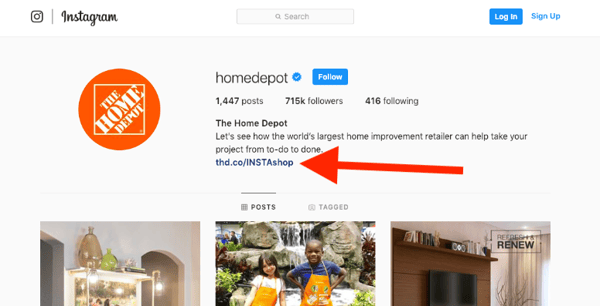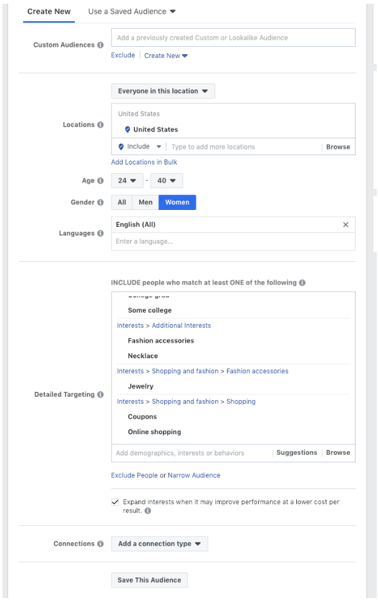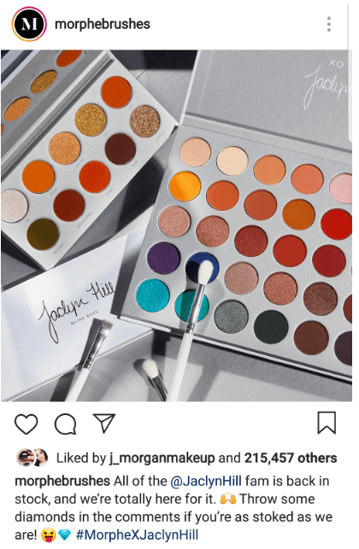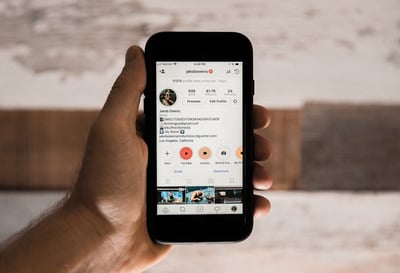With over 1 billion users, Instagram is a powerhouse of a social media platform.
For retailers, it’s also a key platform on which to be active. Not only does Instagram marketing provide a visual-first platform, but it’s also a highly engaged platform for retailers. 80 percent of Instagram users follow at least one business, and 30 percent of users have purchased a product they saw on Instagram.
Here’s a quick overview of the basic steps:
In this article, we’ll break those steps into detail. We’ll cover the entire start-to-finish process for Instagram selling, including both organic (free) and paid advertising options:
Selling on Instagram should be viewed as a part of a holistic approach omnichannel marketing approach. Content shared on Instagram is meant to engage, entertain, and inspire. For retailers, especially those in B2C marketing, your goal is also to sell products.
| Tip: You can sell on Amazon, too! Learn what to sell on Amazon to make the big bucks. |
To sell on Instagram, you need to create a business account. If you’ve already got that taken care of, feel free to jump ahead to the next section.
Getting up and running on Instagram is, fortunately, easy and quick. You’ll have a new Instagram business profile in just a few short steps.
Instagram is primarily a mobile app, and while you will be able to use third party tools to manage it if you want, you do first need to download the app.
Once you’ve downloaded the app, it’s time to set a login. You can attach the account to a business email or phone number. Now’s also the time to create your handle. A handle is the account name other users will be able to see and tag. It’s a best practice to get your handle as close to your company name as possible.
Next up: upload your profile picture to your Instagram profile picture. Again, most brands use their logo for consistent branding, but you may have another photo that fits your brand better.
The Instagram biography is deceptively important. You are allowed only 150 characters, but it’s the only place, beside Instagram Stories, you can place a link unless you utilize third-party software.
The first part of your bio should be devoted to clearly stating who you are, preferably in a fun, relatable way. Then you should use a brief call-to-action (CTA) which gets people to click on the link in your Instagram bio.
Examples of links you could use include:
Some e-commerce platforms have an Instagram integration that makes your Instagram feed shoppable from within Instagram. You can see an example in the image below; take a look at the blue link that finishes with /INSTAshop.

Within your profile settings, you will find the options to “switch to business profile.” Hit this button. Doing so will give you analytics on how your Instagram posts are performing, run ads, and add contact buttons to your profile.
With the business profile created, you can move to the selling process.
Now that you’ve got your Instagram business profile set up, it’s time to start selling.
We’ll start with organic selling on Instagram. This is the unpaid way to sell: Once you’ve got your Instagram profile set up, simply post pictures and videos that feature your products using the following steps.
As discussed, the first step to making sales through Instagram is to link your bio back to your website, campaign, or ready-to-buy products.
Now it’s time to post on Instagram. If you want to create posts that result in sales, stay away from bland, generic, or unprofessional product photos.
Rather, share photos that:
Make sure that your pictures and videos are both well-lit and in focus.
Posting this type of content combined with a shoppable feed can result in excellent organic sales. Circulate Digital, a marketing agency in the United Kingdom, has seen this strategy deliver a 30x ROI for at least one of their clients.
At an average cost of just over $2 per click, Instagram is not one of the cheapest platforms on which to advertise. It is, however, is one of the most effective, with an average conversion rate of 3.1 percent.
While you can advertise from the Instagram app itself, given Instagram is owned by Facebook, it’s highly recommended to advertise on Instagram through Facebook’s ad manager. The ad manager is one of the best advertising dashboards available.
Instagram ads have a number of forms and placements, all of which require you to link to a page of your choosing.
When it comes to Instagram advertising, there are three best practices to keep in mind:
What makes the Facebook ad engine so good is the amount of granular information they have on their users. You should absolutely use this data to your advantage; use your buyer personas to guide your audience creation.
It’s important to narrow down your target audience as finely as you can.
In terms of audience creation, this means you need to utilize the “and” logic in the ad creator.For example, if you’re advertising $30 necklaces with dog pendants to American millennial women your potential audience would look like:

That audience is as generic as you want to ever be. Ideally, you’d also be able to target by people who shop with your competitors, household income, job demographics, life events, etc. The more you can whittle down an audience for an ad, the more you can ensure that the ad is relevant to them. And, a relevant ad = better conversion rates.
It’s important to have a single, clear goal for your ad. This enables you to create an ad that truly conveys the action you want taken to your audience. Creating a clear ad with a specific CTA results in a higher conversion rate -- people know exactly what action to take.
Testing regularly is the true key to Instagram advertising success. Test every part of your ads: audience, creative, copy, placement, colors, products. Literally, every part. Your ads probably won’t be a hit on your first, second, or even third try. Becoming a great advertiser takes practice.
The third way to sell on Instagram is also another paid method: utilizing Instagram influencers.
A word of caution before we begin: New retailers sometimes think of influencers as a “get rich quick” scheme. Utilizing influencers well takes just as much effort and diligence as any other method.
When it comes to influencer marketing, you will once again want to define a clear and measurable objective for your campaign. This objective will help the influencers you’re working with create posts that reach your goals.
To pick influencers, keep in mind the following:
There are a number of methods to work on with influencers. Some may work better than others; it comes down to what suits your target audience. Consider the following options some of which may work better for your brand than others:
The rates for co-branded products are different than a sponsored post; most influencers will take a flat fee for this service as well as a percentage of sales. Co-branded products require upfront investment. So, while they’re not for a brand with a small budget, they can perform extremely well.
Take this example in the beauty industry:

When you’re ready to start working with influencers, you need to negotiate a few things before getting started:
Much as it would be nice to dictate all of those things, influencers will have plenty of feedback on each point above.
With these four steps, you’ll be selling on Instagram in no time. Once you’ve mastered that platform, continue growing your retail sales with more social media platforms:
Cara Wood is the digital marketing manager at ShopPad, a company on a mission to help Shopify stores become successful. They create apps for SMB stores and offer complete custom design for larger ones. When Cara is not hard at work, she can be found trying to keep her beagle out of the trash.
Instagram is a powerful platform for businesses.
 by Holly Rollins
by Holly Rollins
If you’re having trouble getting started with lead nurturing on Instagram, you’re not alone.
 by Rafaella Aguiar
by Rafaella Aguiar
Several years ago, no one could have predicted that Instagram would become the second most...
 by Val Razo
by Val Razo
Instagram is a powerful platform for businesses.
 by Holly Rollins
by Holly Rollins
If you’re having trouble getting started with lead nurturing on Instagram, you’re not alone.
 by Rafaella Aguiar
by Rafaella Aguiar


